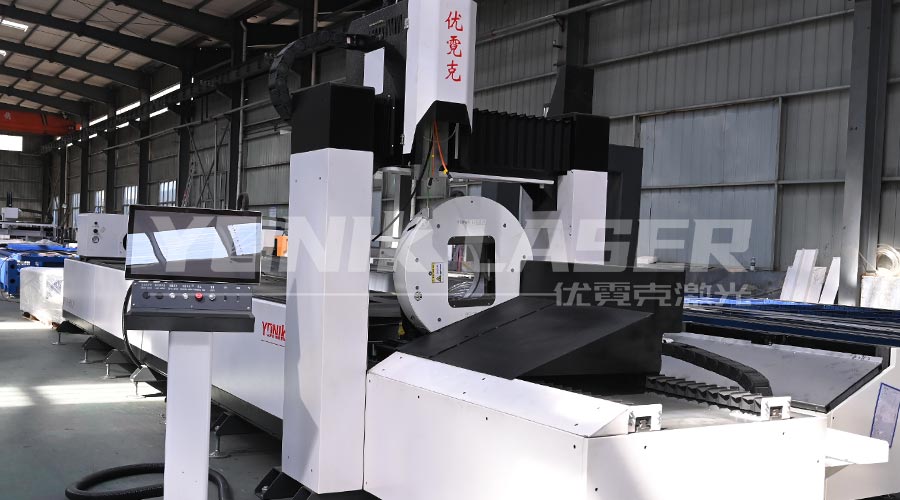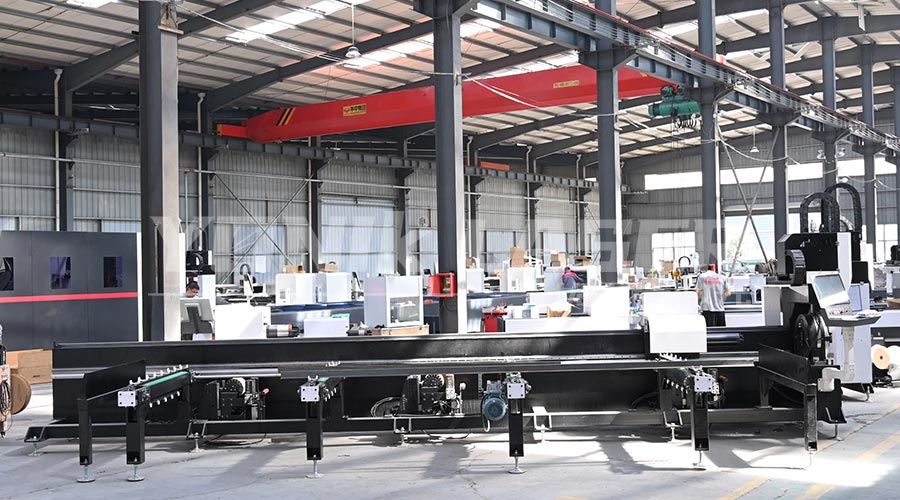In the era of intelligent and green manufacturing, laser cutting machines have become indispensable equipment in metal processing, automotive manufacturing, aerospace, and other fields due to their high precision and efficiency. However, the high energy consumption of these machines during operation has become an increasingly prominent issue. Achieving energy-saving and consumption-reduction through scientific operation and technological innovation has emerged as a critical task for enterprises to reduce production costs and enhance competitiveness. This article explores energy-saving strategies for laser cutting machine operation, supported by practical cases from the industry.

I. Current Energy Consumption Status and Challenges of Laser Cutting Machines
The energy consumption of laser cutting machines primarily comes from the laser generator, cooling system, assist gas, and motion control unit. Taking a typical fiber laser cutting machine as an example, the laser generator accounts for approximately 50%-60% of total energy use, the cooling system 20%-30%, and the remainder from auxiliary equipment. In actual production, issues such as idle operation, unreasonable parameter settings, and inadequate maintenance further exacerbate energy waste. For instance, some enterprises blindly increase laser power to pursue processing speed, reducing power utilization efficiency; or cooling system design flaws lead to excessive refrigeration energy consumption.
II. Core Strategies for Energy-Saving and Consumption-Reduction
1. Optimize Equipment Selection and Configuration
Choose High-Efficiency Lasers: New-generation fiber lasers offer over 30% higher electro-optical conversion efficiency compared to traditional CO₂ lasers. For example, using lasers from brands like IPG or Raycus can reduce energy consumption at the same power level.
Match Power with Processing Needs: Select appropriate laser power based on material thickness and type to avoid "over-engineering." For example, a 1000W laser is sufficient for cutting 1mm stainless steel, eliminating the need for a 3000W unit.
Intelligent Cooling Systems: Adopt variable-frequency compressors and dynamic temperature control technology to adjust cooling power in real time based on laser load. A automotive parts manufacturer reduced annual electricity costs by over $22,000 by upgrading its cooling system.
2. Refine Process Parameters
Dynamically Adjust Cutting Speed and Power: Establish material databases through testing to set optimal parameters for different thicknesses and materials. For example, increasing cutting speed for 6mm carbon steel from 18m/min to 22m/min while reducing power by 5% maintains edge quality and lowers energy use.
Optimize Assist Gas Usage: Reducing nitrogen pressure from 18bar to 15bar and flow by 20% for stainless steel cutting still ensures quality. A sheet metal factory saved $11,500 annually on nitrogen costs through this adjustment.
Minimize Idle and Standby Time: Use nesting software to optimize layout and shorten laser head travel distance; enable automatic standby mode to shut down the laser and cooling system after 5 minutes of inactivity.
3. Equipment Maintenance and Condition Monitoring
Regularly Clean Optical Components: Contaminated lenses and mirrors can cause 10%-15% laser energy loss. Implement daily cleaning and weekly inspection routines to maintain peak performance.
Real-Time Energy Monitoring: Install smart meters and IoT modules to analyze energy consumption trends via cloud platforms. One enterprise identified abnormal cooling system energy use in low-temperature night environments and reduced energy consumption by 12% after adjusting temperature control strategies.
Preventive Maintenance Plans: Regularly lubricate motion guides and gears to reduce friction; calibrate laser beam paths to avoid energy dispersion.
4. Energy-Saving Retrofits for Auxiliary Systems
Waste Heat Recovery: Utilize heat from laser cooling systems for workshop heating or assist gas preheating. A heavy machinery plant reduced winter heating energy use by 40% through this technology.
LED Lighting and Energy-Efficient HVAC: Replace traditional workshop lighting with LEDs and install variable-frequency air conditioners, achieving 25% overall energy savings.
Centralized Gas Supply Systems: Replace scattered gas cylinders with large storage tanks and boosters to reduce waste and replacement frequency.
III. Practical Case: Energy-Saving Transformation of a Sheet Metal Enterprise
Enterprise Background: A sheet metal processing enterprise in Jiangsu Province, China, operates five fiber laser cutting machines with annual electricity consumption exceeding 2 million kilowatt-hours, accounting for 18% of total production costs.
Energy-Saving Measures:
Equipment Upgrade: Replaced three old CO₂ lasers with 3000W fiber lasers, improving electro-optical conversion efficiency from 8% to 35%.
Parameter Optimization: Established a material process database to set dedicated parameters for over 20 common materials, increasing cutting speed by 15% and reducing power by 10% on average.
Intelligent Monitoring: Deployed an energy management system to monitor power, gas flow, and other data in real time, generating automated consumption reports.
Waste Heat Recovery: Used laser cooling water to supply heat for workshop radiators, reducing boiler operation time by 60% in winter.
Results:
Annual electricity consumption dropped to 1.4 million kilowatt-hours, a 30% decrease;
Gas costs reduced by $26,000 annually;
Maintenance frequency decreased by 40%, with a 25% drop in failure rates;
Overall production costs fell by 12%, enhancing product competitiveness.
IV. Future Trends: Deep Integration of Intelligence and Green Technology
With the advancement of Industry 4.0 and "dual carbon" goals (carbon peaking and carbon neutrality), energy-saving technologies for laser cutting machines are evolving in the following directions:
AI-Driven Dynamic Optimization: Use machine learning to analyze material properties and environmental parameters, adjusting cutting strategies in real time.
Hydrogen-Fueled Laser Development: Explore hydrogen-powered lasers to achieve zero carbon emissions.
Full Lifecycle Management: Build a green closed-loop system covering design, manufacturing, and recycling of laser equipment.

V. Conclusion
Energy-saving and consumption-reduction for laser cutting machines require a systematic approach encompassing equipment selection, process optimization, intelligent monitoring, and maintenance management. Enterprises can not only significantly lower operational costs but also align with national green manufacturing policies, contributing to sustainable development. In the context of carbon neutrality, mastering energy-saving technologies will position enterprises at the forefront of fierce market competition.
(Keywords: laser cutting machines, energy-saving, consumption-reduction, operational strategies, practical cases, green manufacturing)
2025-07-22
2025-07-21
2025-07-19